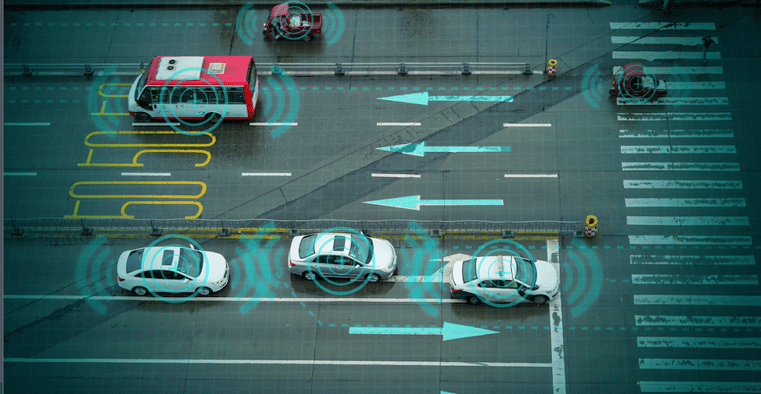With the emergence of the ISO 21434 and ISO 26262 standards, automakers face the challenge of meeting rigorous requirements for software development and functional safety.
Finite State's Next Generation Platform offers a comprehensive solution tailored to the needs of automakers, providing a suite of capabilities designed to streamline compliance efforts. From end-to-end Software Bill of Materials (SBOM) solutions to flexible deployment models, Finite State equips automakers with the tools they need to overcome the complexities of ISO standards while advancing innovation in the automotive industry.
Let's take a deeper look into how Finite State's platform empowers automakers to drive compliance and excellence in software security and functional safety.
Understanding Key Automotive Standards: ISO 21434 and ISO 26262
ISO 21434
ISO 21434, a comprehensive standard that addresses the cybersecurity of road vehicles throughout their lifecycle, from concept to decommissioning, provides guidelines for identifying and managing cybersecurity risks associated with automotive systems, including electronic components, software, and communication networks.
The standard emphasizes the importance of integrating cybersecurity measures into the entire automotive development process, from requirements specification and design to implementation, verification, and validation. ISO 21434 mandates the establishment of cybersecurity management processes, risk assessment methodologies, and cybersecurity requirements tailored to the specific context of each automotive manufacturer and their supply chain.
The standard also promotes collaboration between stakeholders, such as automotive manufacturers, suppliers, and regulatory authorities, to ensure the effective implementation of cybersecurity measures and the continuous improvement of cybersecurity practices in the automotive industry.
ISO 26262
ISO 26262 is an international standard for functional safety in road vehicles, focusing on the development of safety-critical automotive systems to prevent unreasonable risks due to malfunctioning behavior. It provides a systematic approach to the development of safety-related electrical and electronic systems, including hardware, software, and mechanical components, throughout the automotive product lifecycle.
ISO 26262 outlines processes, activities, and requirements for hazard analysis, risk assessment, functional safety management, and validation and verification of safety measures. The standard defines Automotive Safety Integrity Levels (ASILs) to categorize the severity of potential hazards and specifies safety goals and requirements corresponding to each ASIL level.
ISO 26262 encourages the application of risk-based approaches and safety mechanisms, such as fault tolerance, diagnostic coverage, and functional safety concepts, to mitigate safety risks and ensure the safety and reliability of automotive systems under normal operation, as well as in the event of faults or failures.
ISO 21434 and ISO 26262: How Finite State Can Help
The Finite State Next Generation Platform offers several capabilities that can assist automakers in complying with ISO 21434 and ISO 26262 standards:
-
End-to-End SBOM Solution: The Next Generation Platform enables automakers to create comprehensive Software Bill of Materials (SBOMs) through its binary analysis capabilities. By decomposing binaries into subcomponents and enriching them with vulnerability data, automakers can achieve a comprehensive understanding of their software components.
This understanding is critical for compliance as ISO 21434 emphasizes the need for transparent documentation of software components and their associated vulnerabilities.
-
Binary Analysis: Finite State's binary analysis capabilities enable automakers to scrutinize their software for potential weaknesses such as insecure configurations, hard-coded credentials, and cryptographic vulnerabilities.
This aligns with the requirements of ISO 26262, which mandates rigorous analysis and testing of software components to ensure functional safety in automotive systems.
-
Unified Visibility & Risk Management: The Next Generation Platform offers a unified approach to visibility and risk management by integrating with over 150 application security (AppSec) scanning tools. This integration allows automakers to consolidate security assessment data from different sources and streamline their risk analysis process.
ISO 21434 emphasizes the importance of risk management throughout the automotive product lifecycle, and Finite State's platform provides tools for prioritizing and tracking security risks effectively.
-
Flexible Deployment Models: Finite State offers flexible deployment options, including SaaS, hybrid cloud, and on-premise installations, to accommodate the diverse needs and priorities of automakers.
This flexibility aligns with the adaptability requirements outlined in ISO 21434, which recognizes the varying environments and contexts in which automotive software is developed and deployed.
Learn More
Finite State's Next Generation Platform addresses key aspects of software security and risk management, enabling automakers to comply with ISO 21434 and ISO 26262 standards by providing:
- robust SBOM solutions
- Thorough binary analysis
- Unified visibility into security risks
- Flexible deployment options
Subscribe to Our Blog
Get the latest posts delivered straight to your inbox weekly.
Share this
You May Also Like
These Related Stories

Understanding the Connected Vehicle Rule: Strategic Implications and How Finite State Supports Compliance

Navigating Automotive Compliance in the Age of Connected Devices




